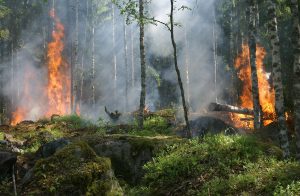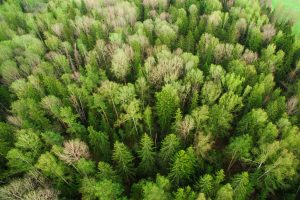CAL FIRE in US pilots Dryad’s ‘ultra-early’ wildfire sensors to cut detection time before next fire season

Berlin, Germany. 3 April 2023 — The California Department of Forestry and Fire Protection (CAL FIRE) is piloting German environmental start-up Dryad Networks’ ‘ultra-early’ wildfire detection technology to improve fire detection speeds. This comes after severe wildfire seasons across the US which, in 2022 alone, saw nearly 70,000 wildfires reported and 7.5 million acres burnt.
CAL FIRE is trialling 400 of Dryad’s sensors in Jackson Demonstration State Forest. The pilot aims to show how sensor technology can support the department by detecting wildfires much faster, subsequently reducing their destruction and the cost of firefighting resources needed to extinguish a blaze.
Wildfire detection methods have remained largely unchanged for decades, with most forested areas relying on human sightings, camera or satellite technology, which can only detect a fire when it’s visible above the canopy and already out of control. The adoption of new ‘ultra-early’ detection technology can reduce wildfire detection times from several hours to a matter of minutes, making it possible for firefighters to get to a fire when it is still easy to put out.
The pilot scheme comes at a pivotal moment in the approach to wildfire management in the US, with the United States Department of Agriculture specifically including sensor technology for the first time in its recently published Request for Information (RFI) for wildfire and land management. The RFI highlighted the challenges associated with keeping communities safe and more resilient to the impacts of climate change and demonstrates the urgent need to develop innovative new approaches to wildfire detection.

Not only can sensor technology detect wildfires much faster, but it can also provide their precise location and utilise trained ‘AI’ noses to distinguish between the different fuels that ignite them. With growing interest in its sensor and network technology, Dryad is ramping up the manufacturing of its wireless sensors, moving from 10,000 units sold in 2022 to producing 230,000 by the end of the year, to be ready to deploy sensors worldwide and at scale.
Dryad’s customers already include a number of municipalities, private forest owners and utility companies around the world. The company also has agreements with 30 resellers across Europe, the Americas and Asia, including working partnerships with Bosch, STIHL, and Vodafone Global, to bring the benefits of the technology to an even larger customer base.
Carsten Brinkschulte, CEO of Dryad Networks, “We’ve seen incredible commercial traction since developing our market-first sensor technology two years ago. On top of our pilot scheme with CAL FIRE, we’re also working with the City of Eberswalde, Germany, and currently have 25 taking place in America, Europe, Canada, and Asia.”
When it comes to wildfires, the message we’re getting over and over again is that timing is everything. The market is in desperate need of rapidly deployable, low-cost, low-power wireless sensors that can detect wildfires in minutes. To meet this need, we’re investing in scaling up the production of our sensors so that we’re ready to fulfil orders.

Our goal by 2030 is to deploy 120 million sensors around the world, putting us on track to save approximately 3.9m hectares of forest and prevent 1.7bn tons of CO2 emissions. These are ambitious goals but not fantasy numbers we believe that this scale is achievable and that we will be able to fulfil our mission to have a significant impact in the fight against climate change. Only with the wide-scale rollout of sensor technology can we really get a handle on wildfires.”
The immediate and devastating impact of wildfires is easily seen, but the true cost of wildfire is often hidden. These impacts are outlined in Dryad’s whitepaper, entitled “What lies beneath: the hidden truth about wildfire”, which is available here.
Comment on this article below or via Twitter @IoTGN
